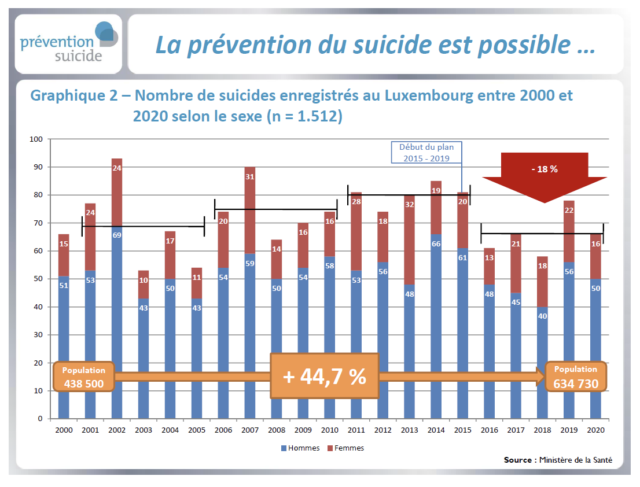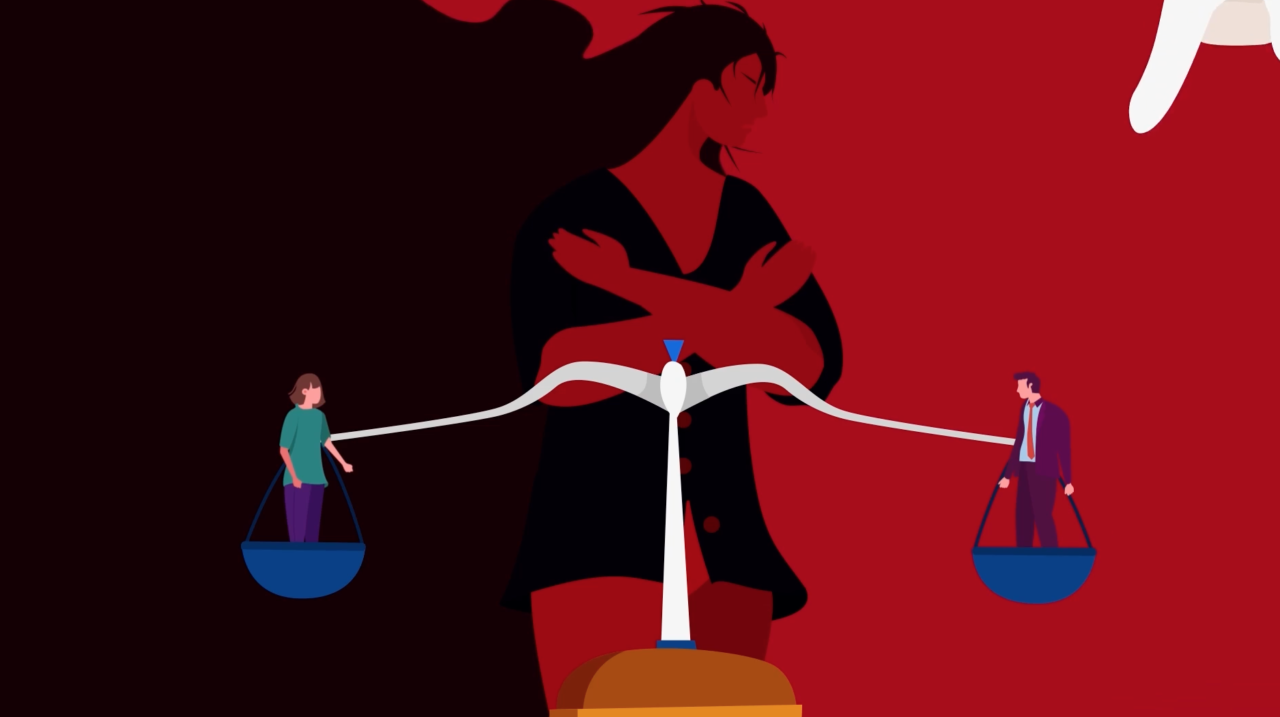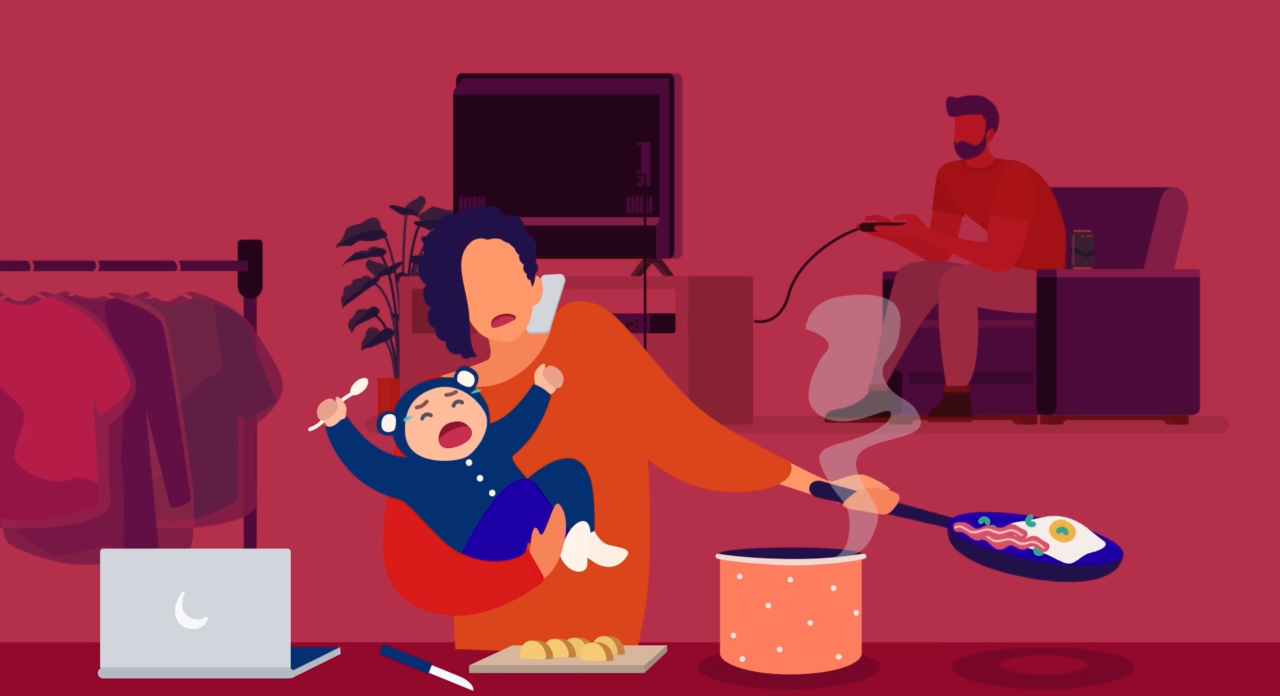Sexism is harmful. It produces feelings of worthlessness, self-censorship, changes in behaviour, and a deterioration in health. Sexism lies at the root of gender inequality. It affects women and girls disproportionately.
What is sexism?
Sexism is any act, gesture, visual representation, spoken or written words, practice or behaviour based upon the idea that a person or a group of persons is inferior because of their sex, which occurs in the public or private sphere, whether online or offline, with the purpose or effect of:
- violating the inherent dignity or rights of a person or a group of persons; or
- resulting in physical, sexual, psychological or socio-economic harm or suffering to a person or a group of persons; or
- creating an intimidating, hostile, degrading, humiliating or offensive environment; or
- constituting a barrier to the autonomy and full realisation of human rights by a person or a group of persons; or
- maintaining and reinforcing gender stereotypes.
 © 2022 Council of Europe. All rights reserved.
© 2022 Council of Europe. All rights reserved.
Who is affected?
Sexism affects mostly women. It can also affect men and boys when they don’t conform to stereotyped gender roles.
Sexism is neither restricted to an ethical background, a gender or similar. But the harmful impact of sexism can be worse for some women and men due to their ethnicity, age disability, social origin, religion, gender identity, sexual orientation or other factors
 © 2022 Council of Europe. All rights reserved.
© 2022 Council of Europe. All rights reserved.
Areas of life
Examples of sexism in language and communications:
The generic use of the masculine gender by a speaker (“he/his/him” to refer to an unspecific person). The cover of a publication depicting men only. The naming of a woman by the masculine term for her profession. A communication campaign including gratuitous nudity. An advertisement with a man showing a woman how to use a washing machine.
Why should it be addressed?
Language and communication matter because they make people visible or invisible and recognise or demean their contribution to society. Our language shapes our thought, and the way we think influences our actions. Gender-blind or discriminatory language reinforces sexist attitudes and behaviour.
How to prevent it?
Use both the feminine and the masculine when addressing a mixed audience. Review public communication to make sure it uses gender-sensitive language and imagery. Produce manuals on gender-sensitive communication for different audiences. Promote research in this area.
Language and communication are not neutral, but are social and cultural carriers that can fuel sexism. For these reasons, they can also play a key role in the fight against sexism. In this respect, the National Action Plan for equality between women and men adopted by the Luxembourg government in June 2020 provides for the creation of a think tank bringing together representatives of public bodies that already have practical experience in this area to explore ways of making language gender-neutral.
Examples of sexism in the media:
A sexualised depiction of women in the media. An all-male TV show. Media reporting on violence against women which blames the victim. Journalists, most often women, receiving comments on social media based on their appearance instead of the issues they discuss. Internet applications sending some job adverts to men only because algorithms are built in a discriminatory way.
Why should it be addressed?
Children and others are bombarded with sexist media messages and influenced by them. Such messages limit their own choices in life. They give the impression that men are the keepers of knowledge and power and that women are objects and it’s ok to comment freely on their appearance. Online sexism pushes women out of online spaces. Online sexism can cause very real harm. Abusing or mocking someone online creates a permanent digital record that can be further disseminated and is difficult to erase.
How to prevent it?
Implement legislation on gender equality in media. Train media and communication professionals on gender equality. Ensure that women and men are represented in a balanced way and in diverse, non-stereotypical roles in the media. Promote advertisements that play with, and raise awareness of, gender stereotypes rather than reinforce them. Provide digital literacy training especially for young people and children. Legally define and criminalise (online) sexist hate speech. Put in place specialised services to provide advice on how to deal with online sexism.
The gender stereotypes conveyed in the media condition our view of the concepts of “masculinity” and “femininity” and guide the decisions affecting individual choices for professional and private life. After all, it is important to avoid that the images conveyed reinforce gender discrimination or incite violence against girls and women.
The Global Media Monitoring Project (GMMP) – Luxembourg aims to quantitatively and qualitatively evaluate the respective presence of women and men in the Luxembourgish media. The random sample survey of September 29, 2020 revealed that women and girls cover only a quarter of the people represented in the selected articles. Although it is necessary to differentiate between the different media (print, audiovisual media, online media) as well as specific themes, female representation has hardly increased compared to previous editions (2010, 2015).
Examples of sexism at the workplace:
The practice of unofficially excluding women who have children from career opportunities. In meetings, ignoring women, appropriating their contributions or silencing them. Favouring a man rather than a woman for a managerial position by presuming her lack of authority. Gratuitous comments about physical appearance or dress (which undermine women as professionals). Derogatory comments to men taking on caring roles. “Mansplaining”.
Why should it be addressed?
Workplace sexism undermines the efficiency of victims and their sense of belonging. Silencing through sexism means that ideas or talents are ignored or under-used. Belittling comments create an intimidating/oppressive atmosphere for those confronted with them and can degenerate in violence/harassment. Victims may develop higher anxiety levels, be more prone to outbursts and depression. More generally, sexism leads to lower salaries and fewer opportunities for those confronted with it.
How to prevent it?
Adopt and implement codes of conduct defining sexist behaviour and prevent it through training. Put in place complaint mechanisms, disciplinary measures and support services. Managers must state and show their commitment to act against sexism.
The participation of women in economic decision-making processes is the central challenge for equality in the workplace. However, the allocation of responsible positions in this area is often gender-specific. On September 30, 2022, the Luxembourg government adopted the interim report on the representation of women in the decision-making bodies of public institutions and companies (listed and unlisted) in which the State holds interests or participations. The report shows that the collective effort of all the actors involved must continue in order to reach the global threshold of 40% of women’s representation.
At present, it is only the rate of women representing the State on the boards of directors of public establishments that exceeds 40%. The rate of women representing the State on the boards of directors of public establishments was 41% compared to 40.67% a year ago and 30.34% on January 31, 2015, i.e., an evolution of 10.33% over 7.5 years. At the level of private companies, the rate of women representing the State has increased to 34.41% as of June 30, 2022, compared to 24.69% on January 31, 2015, an evolution of 9.72% over 7.5 years. The State is thus setting an example and is constantly monitoring positions in public institutions and companies with State participation.
More information:
Observatoire de l’Egalité
Ministère de l’Egalité entre les femmes et les hommes
Examples of sexism in the public sector:
Sexualised comments or comments about the appearance or family situation of politicians, most often women, including within parliaments. Comments about the sexual orientation or appearance of users by staff of public services. Sexist representations / posting of images of naked women in public workplaces (e.g. hospital staff rooms). Comments on women’s appearance in public spaces, including public transport.
Why should it be addressed?
The public sector has a duty to lead by example. Sexism in parliaments is very common but it limits the opportunities and freedom of women in parliaments, be they elected or staff. Sexism undermines equal access to public services. Sexism in public spaces limits women’s freedom of movement. Sexism can lead to violence and creates an oppressive environment preventing mostly women from fully participating in public life.
How to prevent it?
Training of staff. Put in place codes of conduct, complaint mechanisms, disciplinary measures and support services. Implement awareness raising campaigns, such as toolkits or posters in public space explaining what sexism is. Promote gender balance in decision-making. Promote research and the gathering of data on the issue.
Sexism in the public space is a daily reality from which mostly girls and women suffer. Also in Luxembourg. As a proof, the Ministry of Equality between Women and Men is regularly confronted with direct testimonies of victims, such as the one formulated in an e-mail on October 1, 2022 :
„De Moien sen ech an der Groussgaass vun engem Junky ugeschwaat gin. Wéi ech nët réagéiert hun, huet e mech „sale pute“ vernannt an huet mech nët roueg gelooss, bis e Mann, deen d’Szene mat senger Frëndin observéiert hat, agegraff huet.
Fir mech ass daat di zweet Kéier, dat an engem Zaitraum vun nëmme puer Méint op der Strooss verbal agresséiert gin. Di Kéier virdrun gouf ech vun engem Velosfuerer, dee mat senge Kollege laanscht gefuer ass, als „jolie demoiselle“ bezeechent, a wéi ech mech du gewiert hun, huet e seng Kollege gefrot, waat ech dann hät an ob ech vlaischt „mal baisée“ wier.
Wa mier daat do passéiert, da passéiert daat aanere Fraen. Dofir wonneren ech mech, dat ech hei zu Letzebuerg nach nie eppes iwer Verbalgewalt vis-à-vis vu Fraen an der Öffentlechkeet héiren hun.
(…)
Vrun drësseg Joer koum meng Mamm eng Kéier entsaat aus der Staat rëm, welle en hier vrun enger Vitrine gesoot haat, sie misst mol „gudd gebiischt“ gin. Ech hun hier deemols gesoot, si braicht nët ze culpabiliséiren, mä d’Belästegung muss ech bis haut erdroen.“
This testimony reflects daily realities that are intolerable and that call for concrete action.
Examples of sexism in the justice system:
A judge implying to a victim of sexual violence that she was ‘asking for it’. A law professional commenting on the appearance of a woman who is a colleague. A police officer not taking an allegation of violence against women seriously or trivialising it.
Why should it be addressed?
Such behaviour can lead to victims dropping cases. They create distrust in the justice system. They can lead to misinformed judgments. They demean women and can push them out of legal professions.
How to prevent it?
Implement policies on women’s equal access to justice. Train legal and law enforcement professionals. Deconstruct judicial stereotyping through awareness-raising campaigns. Ensure professionals base their judgments on facts, on the behaviour of the perpetrator and the context of the case rather than the victim’s clothing, for example.
Examples of sexism in education:
Textbooks containing stereotypical images of women/men, boys/girls. The absence of women as writers, historical or cultural figures in textbooks. Career and education counselling discouraging non-stereotypical career or study choices. Teachers making comments about the appearance of pupils/students/fellow teachers. Sexualised comments to girls. Bullying of non-conforming pupils/students by fellow pupils /students or education professionals. The absence of awareness /procedures / reactions to address such sexist behaviour.
Why should it be addressed?
The content of education and behaviour of education professionals heavily influences perceptions and behaviour. A climate of sexism in learning establishments negatively affects the achievements of pupils/students. Sexism in education can limit future individual career and lifestyle choices.
How to prevent it?
Implement policies and legislation on gender equality in education. Review textbooks to ensure that they are free of sexism and that they depict women as well as men in non-stereotypical roles. Ensure the representation of women as scientists, artists, athletes, leaders, politicians in textbooks and programmes. Teach women’s history. Ensure the availability of complaint mechanisms. Teach gender equality issues as well as sexuality education (including consent and personal boundaries). Train education professionals on unconscious bias.
At a press conference in June 2021, the Luxembourg government emphasized the importance of equality in education and presented their actions for a real culture of gender equality from the first years of schooling. By adopting a cross-cutting approach to raise awareness of gender equality among children and adolescents, the aim is to prevent sexist behavior and violence, avoid discrimination and know how to identify gender stereotypes. This long-term work is intended to be an integral part of national education and should lead to a critical reflection on stereotypes that can negatively influence the decisions of girls and boys in their personal and professional choices.
In order to support these reflections, MEGA has developed documentation such as the « MEGA-Katalog » with its offer of interactive workshops in the field, Pixi books or the brochure « We are equal ». Online videos also help to understand the impact of equality on personal development and ensuring an inclusive society. The thematic website of the Ministry rockmega.lu gathers information for parents, teachers, educators and anyone interested in learning about equality and education. The objective is to stimulate discussion and reflection to make equality a reality.
The textbooks and teaching materials used in the classroom implicitly communicate culture and values. They have a great impact on the image that children and young people have of the world around them. One important aspect is the representation of girls and boys, women and men and their place in society, which can have an impact on the development of identity and on students’ career choices. Indeed, gender stereotypes influence, often unconsciously, the behavior of boys and girls. Acting as a psychological barrier, they can limit children and youth in their choice of leisure activities, studies or professions.
Examples of sexism in culture and sport:
Sportswomen depicted in the media according to their family role and not their skills and strengths. Trivialising women’s sporting achievements. Demeaning men who play “feminine” sports. Women in sexy outfits as “decoration” in cultural or sporting events. Absence of women’s work in art exhibitions. Scarcity of meaningful roles for women in cinema and the virtual absence of roles for older actresses. Scarcity of funding for film production in which women have a leadership role. Under-resourcing of women’s art.
Why should it be addressed?
Both culture and sport are shapers of attitudes. If women and men are depicted in stereotyped ways, this will feed into gender stereotyping. When mostly men are visible in these areas, this influences the way women are seen as potential artists or athletes and narrows the range of role models for children and young people. Gender stereotypes limit the choice of women/men girls/boys to practice sports that are not considered “feminine” or “masculine”; this leads to self-censorship. In both areas, sexism leads to lower salaries and fewer opportunities for those confronted with it.
How to prevent it?
Measures to encourage creative work by women and gender mainstreaming in cultural and sport policies (scholarships, exhibitions, training, provision of space/workshops). Ensure better and more media coverage of women’s sports and art. Encourage sponsors to support women’s arts and sports. Adopt codes of conduct to prevent sexist behaviour, including provision for disciplinary action in sports federations. Encourage leading sport and cultural figures to speak up against sexism and implement campaigns to denounce violence in sport and sexist hate speech.
Culture and sport are areas of leisure where gender stereotypes and sexist attitudes are often conveyed. Social constructions related to masculinity and femininity play a subordinate role in sport due to the fact that it is attributed the characteristics of virility, strength, self-affirmation and power…thus mostly male attributes. This continues to have an effect on the (in)equal representation of women and men at the various elite levels, in decision-making bodies, in the presentation of sports achievements in the media and in the context of wages.
Sexism is also present in the cultural environment. Discriminatory words and deeds, stereotyped professions and skills, the devaluation of women, the unequal representation of women and men in decision-making bodies in cultural institutions, or the unequal presence of female and male artists in spaces dedicated to artistic presentation are all evidence of sexism in the cultural milieu. For this reason, the Luxembourg government has planned in the “Kulturentwecklungsplang 2018-2028” to set up an action plan for gender equality in all areas of culture.
More information:
Observatoire de l’Egalité – Culture
Kulturentwécklungsplang 2018-2028
Examples of sexism in the private sphere:
Women performing more unpaid (care and household) work than men, for example only women helping to wash dishes at a dinner party. Sexist jokes between friends. Systematically offering “feminine” or “masculine” toys to girls/boys. Boys being encouraged to run and take risks and girls to be docile and compliant. The use of expressions like “running like a girl” or “boys will be boys”.
Why should it be addressed?
Unpaid work weighs on women’s participation in the labour market, on their economic independence as well as on their participation in sport and leisure activities. Toys (e.g. a mini kitchen or a construction game) influence gender roles, but also future study or career choices. Sexist jokes can intimidate and silence people and they trivialise sexist behaviour.
How to prevent it?
Awareness-raising measures and research on the impact and the sharing of unpaid work between women and men. Measures for reconciling private and working life for all. Promotion of non-gendered toys. Encouraging boys as well as girls to participate in household tasks. Giving girls, too, the space and freedom to play, explore and be themselves.
In the context of a LISER scientific study on the impact of the COVID-19 crisis on gender equality in Luxembourg, one of the aspects addressed was the use of telework by women and men, as well as the differences in terms of time use in the context of home education and in the performance of domestic tasks. Among other things, the study showed the gender gap in unpaid work in June 2020 was qualitatively wider than it was before the pandemic. While both increased the amount of time spent on housework and childcare, women did so 30 minutes more per day, on average. The results suggest that men missed their chance to increase their contribution to unpaid work in a way that could have narrowed the gender gap in household chores and childcare. This has implications for women’s careers.
“Sief kee Läppchen”, “Männer kräischen net”, “Stéi dach emol däin Mann” are just three examples of sexist and easily peddled slogans against men who do not fit the image of the strong and/or mentally disturbed man. According to the World Health Organization, a person’s mental health is defined “as a state of well-being that enables people to achieve their potential, cope with the normal challenges of life, work successfully and productively, and be able to contribute to the community.”
This definition indeed contains the primacy of “having to function” in our society. And it is primarily boys and men to whom the attributes of strength, stamina, self-assertion, virility and power are attributed. Indeed, men have been raised to be tough, stoic, and manly, rather than being encouraged to talk about their emotions and show their vulnerability. Men are also less likely to seek help, and suffer in silence or engage in destructive strategies, such as substance abuse and risky behaviors. Women are diagnosed with mood and anxiety disorders much more often than men, so why is there a need to raise awareness of men’s issues? Men are also more likely than women to commit suicide, although the number of attempts is three to four times higher for women.
The following table shows the f/m ratio for suicides in Luxembourg, which in general is 3 times higher for men than for women.

Facts and Figures
-
63% of women journalists have been confronted with verbal abuse
-
Women spend almost twice as much time as men on unpaid housework (OECD countries)
-
80% of women stated that they have been confronted with the phenomenon of “mansplaining” and “manterrupting” at work
-
In the UK, 66% of 16-18-year-old girls surveyed experienced or witnessed the use of sexist language at school
-
In France, 50% of young women surveyed recently experienced injustice or humiliation because they are women
-
59% of women in Amsterdam reported some form of street harassment
-
In Serbia, research indicates that 76% of women in business are not taken as seriously as men
-
Men represent 75% of news sources and subjects in Europe
Violence sometimes starts with a joke
Individual acts of sexism may seem benign, but they create a climate of intimidation, fear and insecurity. This leads to the acceptance of violence, mostly against women and girls.
Show what could happenCouncil of Europe
This is why the Council of Europe has decided to act by adopting a Recommendation to prevent and combat sexism.
Contacts to get help
Have you been a victim of sexism in your daily life (moral harassment, sexism at school or at work, online harassment, discrimination related to gender…) ? Do you feel the need to talk about it?
Emergency contacts and consultation services:







